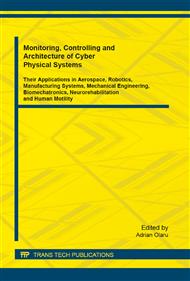[1]
D. Andreadis, Scramjet Engines Enabling the Seamless Integration of Air and Space Operations, (2004).
Google Scholar
[2]
W. Heiser & D. Pratt, Hypersonic Air-breathing Propulsion, AIAA Education Series, Washington C, (1994).
Google Scholar
[3]
Andreadis, D, Scramjets Integrate Air and Space, (2004).
Google Scholar
[4]
K. A. Skinner and R. J. Stalker, Species Measurements in a Hypersonic, Hydrogen-Air, Combustion Wake, COMBUSTION AND FLAME, Vol. 106, pp.478-486, (1996).
DOI: 10.1016/0010-2180(96)00018-1
Google Scholar
[5]
I. N. Momtchiloff, E. D. Taback, and R. F. Buswell, Kinetics in hydrogen-air flow systems. I. Calculation of ignition delays for hypersonic ramjets, pp.220-230, (1963).
DOI: 10.1016/b978-1-4832-2759-7.50031-5
Google Scholar
[6]
Richard C. Oldenborg, David M. Harradine, Gary W. Loge, John L. Lyman, Garry L. Schott and Kenneth R. Winn, Critical reaction rates in hypersonic combustion chemistry, pp.981-987.
Google Scholar
[7]
S. Yungster, K. Radhakrishnan, Simulation of unsteady hypersonic combustion around projectiles in an expansion tube, Shock Waves Vol. 11, p.167–177, (2001).
DOI: 10.1007/pl00004073
Google Scholar
[8]
K. Kumaran and V. Babu, Investigation of the effect of chemistry models on the numerical predictions of the supersonic combustion of hydrogen, Combustion and Flame, Vol. 156, p.826–841, (2009).
DOI: 10.1016/j.combustflame.2009.01.008
Google Scholar
[9]
Shigeru Aso, A. Hakim, S. Miyamoto, K. Inoue and Yasuhiro Tani, Fundamental study of supersonic combustion in pure air flow with use of shock tunnel, Department of Aeronautics and Astronautics, Kyushu University, Japan, Acta Astronautica, Vol. 57, pp.384-389, (2005).
DOI: 10.1016/j.actaastro.2005.03.055
Google Scholar
[10]
S. Zakrzewski, B.E. Milton, K. Pianthong, M. Behnia, Supersonic liquid fuel jets injected into quiescent air, International Journal of Heat and Fluid Flow, Vol. 25, (2004), p.833–840.
DOI: 10.1016/j.ijheatfluidflow.2004.05.010
Google Scholar
[11]
Kyung Moo Kim, Seung Wook Baek and Cho Y. Han, Numerical study on supersonic Combustion with cavity-based fuel injection, International Journal of Heat and Mass Transfer, Vol. 47, pp.271-286, (2004).
DOI: 10.1016/j.ijheatmasstransfer.2003.07.004
Google Scholar
[12]
M. Deepu, Recent Advances in Experimental and Numerical Analysis of Scramjet Combustor Flow Fields, Vol. 88, (2007).
Google Scholar
[13]
K.M. Pandey and E. Rathakrishnan, Annular cavities for base flow control, International journal of Turbo and Jet Engines, Vol. 23, No. 2, pp.113-127, ISSN- 0334-0082, (2006).
DOI: 10.1515/tjj.2006.23.2.113
Google Scholar
[14]
K.M. Pandey and E. Rathakrishnan, Influence of cavities in flow development in sudden expansion: a comparison between supersonic and subsonic flow regime, International Journal of Turbo and Jet Engines, Vol. 23, No. 2, pp.97-112, Published from Freund Publishers, Israel, (2006).
DOI: 10.1515/tjj.2006.23.2.97
Google Scholar
[15]
Jiyun Tu, Guan Heng Yeoh and Chaoqun Liu, Computational Fluid Dynamics, Elsevier Inc. (2008).
Google Scholar
[16]
K.M. Pandey and S. Roga, CFD Analysis of Scramjet Combustor with Non-Premixed Turbulence Model Using Ramp Injector, Applied Mechanics and Materials, Trans Tech Publications, Switzerland, Vol. 555, pp.18-25, (2014).
DOI: 10.4028/www.scientific.net/amm.555.18
Google Scholar


